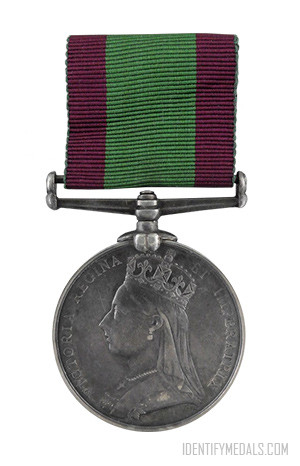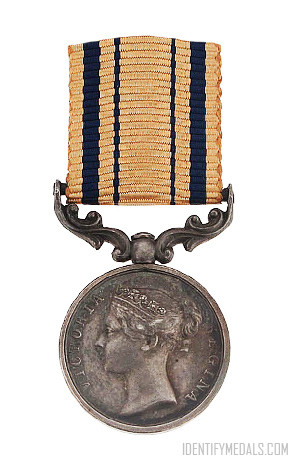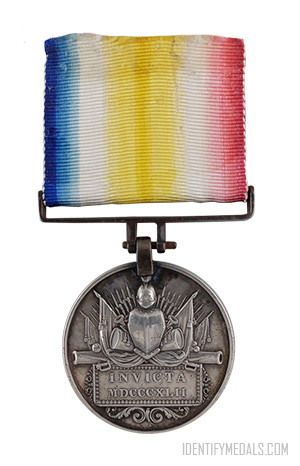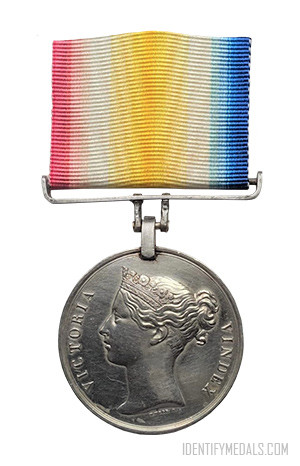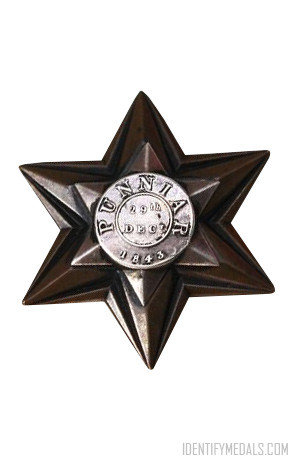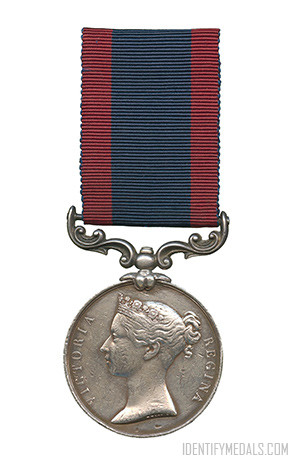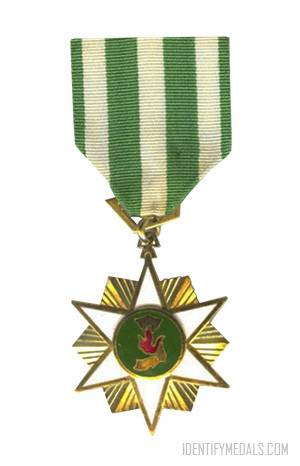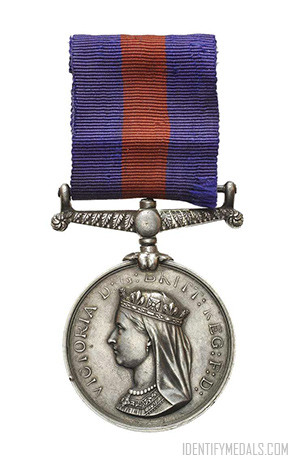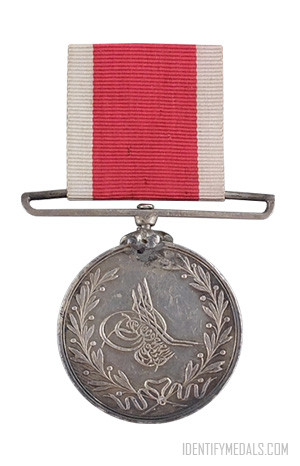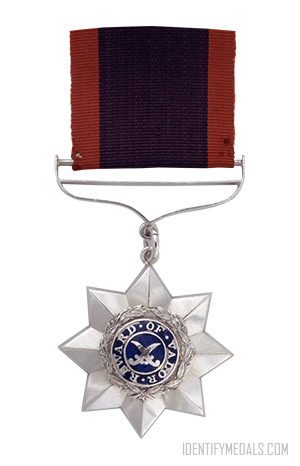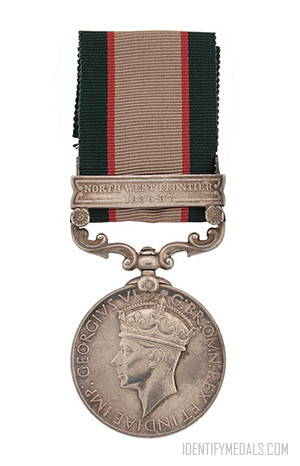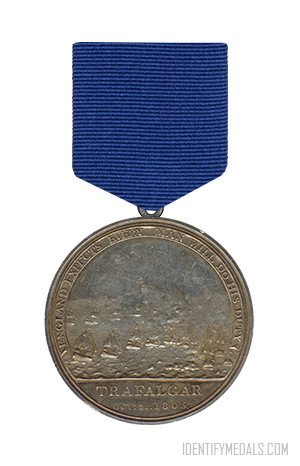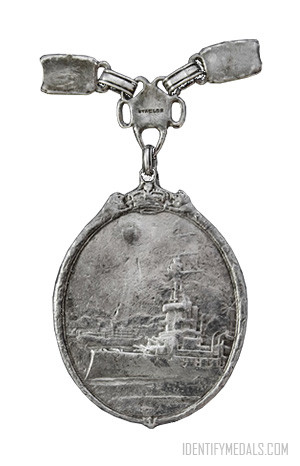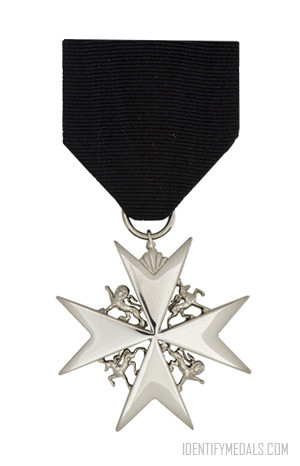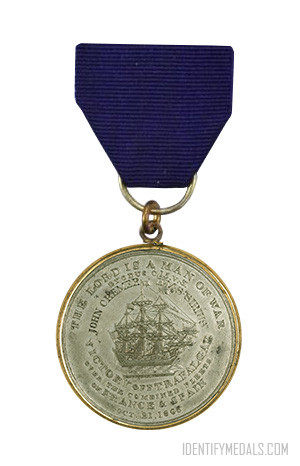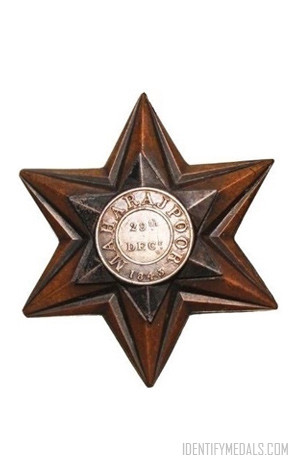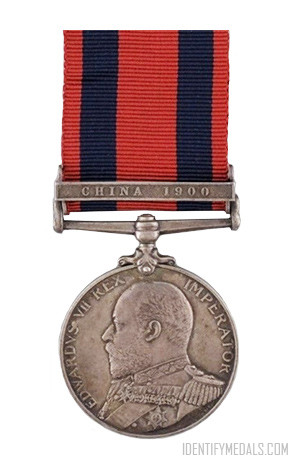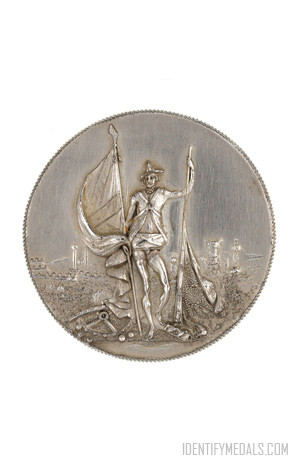- Time Period: Pre-WW1
- Year of Institution: 19 March 1881
- Country: Great Britain
The Afghanistan Medal is a campaign medal awarded to members of the British and Indian armies who served in Afghanistan between 1878–1880 during the Second Afghan War, the first war being from 1839–1842.
The war was caused by British fears of increasing Russian involvement in Afghan affairs. In 1877 the Afghan Amir refused to accept a British Resident and in 1878 agreed a treaty with Russia granting it protective rights in Afghanistan. In response, a British-led force entered the country and advanced on Kabul. The Afghans sued for peace and accepted a British Resident in Kabul, but the Resident was murdered in September 1879 and the war recommenced. A British-led force occupied Kabul, defeating the Afghans en route at Charasia. Sporadic fighting continued and after defeat at Maiwand, a British force were besieged in Kandahar, resulting in the Afghan defeat leading to the conclusion of the war.
Medals awarded to the 66th Foot (Berkshire Regiment) and E Battery of B Brigade, Royal Artillery, rate a high premium as these units sustained the heaviest casualties as the battle of Maiwand in July 1880.
Plain silver clasps were awarded and are found as follows:
- “ALI MUSJID” (21 November 1878)
- “PEIWAR KOTAL” (2 December 1878)
- “CHARASIA” (6 October 1879)
- “KABUL” (10–23 December 1879)
- “AHMED KHEL” (19 April 1880)
- “KANDAHAR” (1 September 1880)
The Afghanistan Medal Design
The Afghanistan Medal is struck in silver and circular, measuring 36 millimeters (1.4 in) in diameter.
The obverse of the medal displays a veiled effigy of Queen Victoria facing left, with “VICTORIA REGINA ET IMPERATRIX” around the edge. The reverse shows marching and mounted soldiers with arms with an elephant carrying a cannon. In the upper-left of the medal around the edges is “AFGHANISTAN” and on the bottom in a straight line is “1878-79-80”.
The medal hangs from a plain suspender which is attached to the medal with a double toe claw. The ribbon for the medal is 33 millimetres (1.3 in) in width and is dark green with broad crimson edges.

